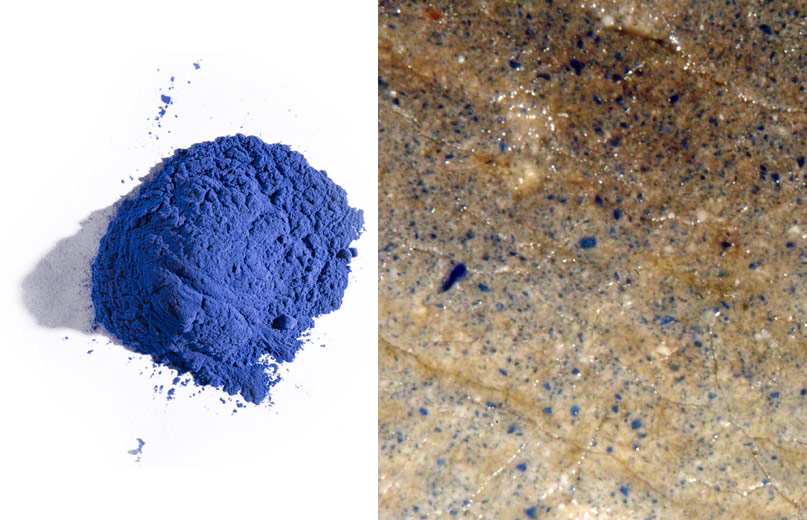
Maerten van Heemskerck often used the blue pigment smalt, made from finely pulverized potassium glass, a magnified sample of which is shown at left. In the Ecce Homo altarpiece, this pigment has discolored and faded, though the original blue is visible in some of the larger particles of smalt when seen under magnification, as shown at right.
Smalt's strong purplish-blue hue appealed to artists because it resembled rare and expensive ultramarine made from the ground mineral lapis lazuli. In the Ecce Homo, Heemskerck mixed smalt with other pigments to create a surprising range of purples and violets. Smalt was a relatively new pigment in Heemskerck's day, and he would not have known of its tendency to fade.
Magnified paint sample above right from the Ecce Homo altarpiece, Maerten van Heemskerck, 1544